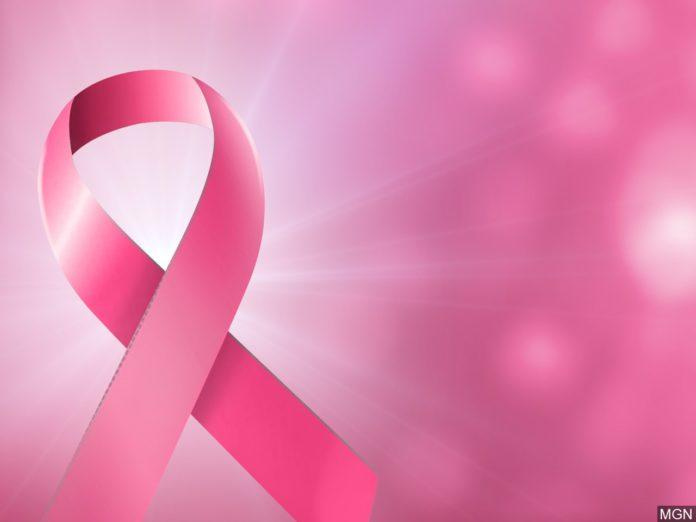So You're Thinking About a Mammogram? Here's What Will Happen
Lifestyle
|
Oct 28, 2019
|
4 MIN READ

Editorial note: October is Breast Cancer Awareness Month, and in hopes of encouraging you to get your mammogram, I'm sharing my story of what it feels like to have one.
When they ask you to come into the back office to discuss your mammogram, it’s not a good sign.
“Mrs. Ali. We saw something on your scan. It’s right here,” the technician said, pointing to a tiny cluster of dots that I wouldn’t have known was anything (with my untrained eye). “It could be a tiny salt deposit, it could be something else. There are two options here. We could do a series of mammograms every month for the next six months or longer to monitor the area and see if it grows, or we could do a biopsy. We recommend the biopsy.”

Photo by Ben Hershey on Unsplash
Let me start by saying – this story has a happy ending. I had the biopsy, the situation was worrisome, the outcome was perfectly fine. The cluster of dots was some sort of deposit in my breast tissue, and no cancer. I don’t have a history of breast cancer or any cancer in my family, which worked in my favor, Alhamdullilah. This was a private health incident in my life, one of many health scares and problems I’ve had over the years, and I choose to share this with you for one reason and one reason only:
Get your mammograms on time, ladies.
If the woman I am now had a chance to talk with the woman I was 20 years ago, on the cusp of getting married, I’m not sure I’d want to tell her about all there was to come – both the good and the bad. As in, brace yourself! One thing, though, I would want to say is to get comfortable with your body and your health, especially in regards to medical tests, procedures and your natural monthly cycles.
Sometimes one of the byproducts of living a hijab-wearing modest lifestyle (or modest in general) can be a discomfort with disrobing in front of doctors or for annual medical testing. Sometimes perceived religious messaging can also be a deterrent, as evidenced by this survey of 240 Chicago-area Muslim women, which found that 37 percent hadn’t obtained a mammogram in the two previous years.
I also recently read an article in the BBC about how breast cancer has claimed more than 17,000 lives in Pakistan, according to the World Health Organization, while doctors in the country say the annual figure is closer to 40,000:
“They say the disease affects one in every nine women in the country, but that cultural and social taboos make it very hard for women to get the help they need to survive.‘Breast cancer is associated with women's sexuality so it becomes a taboo subject in Pakistan,’ says Omar Aftab, from the breast cancer charity Pink Ribbon Foundation. ‘Rather than seeing it as a disease, it's a sexuality issue.’Survivors say it's a ‘lonely journey.’”
Whatever reasons may deter some Muslim women from seeking out annual mammograms, there is a reason why regular screenings are recommended for women over 40, while women over the age of 50 should get them. I got my first one when I turned 40. My biopsy happened a year or two after that. The actual process of a mammogram is uncomfortable, to be sure, but it’s over and done pretty quickly.
Let me talk you through the process.
In my experience, the people who help you get screened are almost always women. If for some reason the place you go to get a mammogram has a male working there, you can ask for female tech/screener to conduct your mammogram. After disrobing and removing your bra, you will wear a hospital gown over your pants and bide your time in an internal waiting room (usually) until you are called in. You may want to ask if there are any men in the internal waiting room.

The actual mammogram involves you having to place your breast upon a flat support plate. (You're standing up for this test.) Depending on how your breast tissue is shaped, the tech may ask you to manipulate it to sit a certain way on the plate, or she may (with your permission) help you adjust it so that she can get an x-ray of the tissue at the right angle. This is the part that I found more uncomfortable, given my desire to be modest and covered.
Once your breast is in the proper position, another plate comes down and compresses (squeezes) it. I’m not going to lie – it is very uncomfortable. Women experience mammograms in many different ways. Some may feel pain, especially if they are sensitive to touch. Others may feel uncomfortable pressure. Some are not that bothered at all. Honestly, my coping mechanism was to do an internal count in my head after asking the tech now long the compression will last and telling myself –You are tougher than this. You have given birth or endured other types of pain much worse than this.
Once the mammogram is complete, the compression plates will release. Sometimes you need to be careful moving your breast off the plate, as it can be a bit sticky. So, be gentle. Then, it’s time for the next one.
The whole thing is done in a few minutes, and soon enough I was putting my clothes back on. At the place where I get my mammograms, I usually wait there for a bit to get the results read. If I don’t have time to wait, I get called later with the results. The second or third time I went in for my annual mammogram was when I was told they had seen something. I ended up getting a 4-D mammogram after that, which confirmed the small suspicious shadow, which led to my deciding to get a breast biopsy.
Alhamdulliilah, everything was in the clear after the biopsy was completed. I am glad I had seen the process through to the end instead of putting my mammogram on the back burner or never getting it done at all. A lot of women in my family just don’t get it done, and while I know sometimes cultural upbringing can sometimes impede the women in my family from taking this seriously, it simply isn’t an excuse. So I’ll continue to get mine annually or bi-annually, and I’ll continue to encourage the women in my family to get theirs done as well.
I hope you’ll do the same.
Subscribe to be the first to know about new product releases, styling ideas and more.
What products are you interested in?

